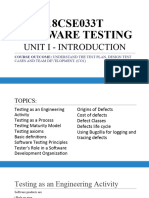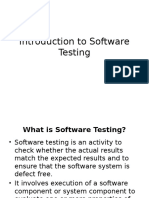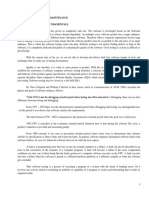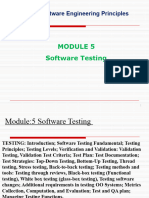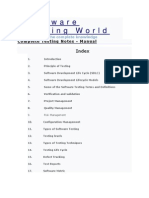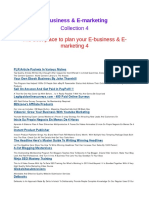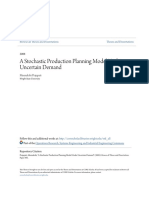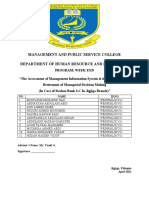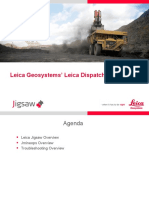0% found this document useful (0 votes)
46 views56 pagesSoftware Testing Unit 1
Software testing is a critical process that assesses the functionality of software to identify defects and ensure quality before deployment. It encompasses various testing types, including dynamic and static testing, and follows a structured process involving planning, execution, and reporting. Key principles emphasize that complete testing is impossible, testing is context-dependent, and that early detection of defects is crucial for cost-effective software development.
Uploaded by
gokuleswar0001Copyright
© © All Rights Reserved
We take content rights seriously. If you suspect this is your content, claim it here.
Available Formats
Download as PPTX, PDF, TXT or read online on Scribd
0% found this document useful (0 votes)
46 views56 pagesSoftware Testing Unit 1
Software testing is a critical process that assesses the functionality of software to identify defects and ensure quality before deployment. It encompasses various testing types, including dynamic and static testing, and follows a structured process involving planning, execution, and reporting. Key principles emphasize that complete testing is impossible, testing is context-dependent, and that early detection of defects is crucial for cost-effective software development.
Uploaded by
gokuleswar0001Copyright
© © All Rights Reserved
We take content rights seriously. If you suspect this is your content, claim it here.
Available Formats
Download as PPTX, PDF, TXT or read online on Scribd
/ 56

